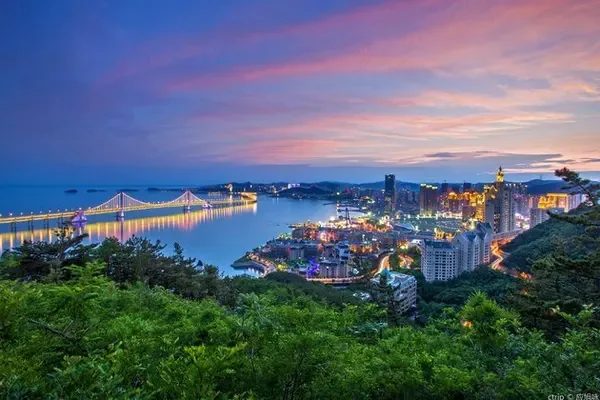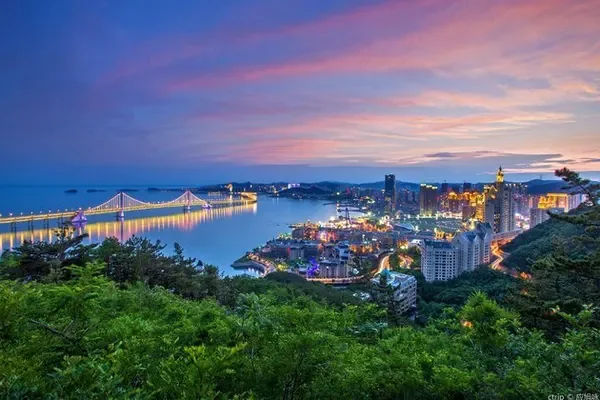When it comes to Shihuadong, old Beijingers can say that everyone knows everyone. Almost every friend born in the 1980s came here during the spring outing organized by the school when they were in elementary school. With the warm spring season in Beijing, this place that has amazed countless tourists, the boss came here again with enthusiasm.
Open Baidu APP to see high-definition pictures
How famous is Beijing Fangshan Stone Flower Cave?
Shihua Cave is a member of Shihua Cave International Tourist Cave, and it is also one of our national scenic spots. It covers an area of 84.66 square meters and has extremely rich and prominent cave landscapes and scientific research value. As a landscape resource with karst cave landform as the core, it can be said to be our super precious cave resource due to its large scale, complete types and beautiful shapes. There are many mountains in the scenic area, and the Dashi River meanders through it. The Shihua Cave can be called a bright pearl among the beautiful mountain peaks. Friends who travel here for the first time will be shocked by its beauty. This magnificence is simply the perfect display of nature's artwork.
How amazing is the Stone Flower Cave in Fangshan, Beijing?
I wouldn't be exaggerating if I say this is the most breathtaking cave view I've ever had. The beauty of the cave, which is known as the top ten wonders of the world, will surprise you again and again. From the classic yaochi stone lotus to the unique fiery trees and silver flowers in the cave, nature has brought out its uncanny craftsmanship to the fullest here.
moon milk stone
Located in the second hall on the first floor, it is like a beautiful lotus pond with blooming "lotus flowers", which is called "moon milk stone" geologically. It was first discovered in Shihua Cave in Beijing in 1982. Using carbon-14 and uranium dating, it is about 34,000 years ago.
stone flag
Located at the highest point of the West Branch Cave on the second floor, there are strange-shaped stalactites, stone swords, and stone flags hanging from the top of the cave, which are as white as jade and named "white jade canopy". The most spectacular of these is a stone flag, 2.18 meters high and 1.1 meters wide, formed by the synergistic deposition of dripping water from the top of the cave and flaky flowing water.
stone waterfall
Located in the deepest part of the West Branch Cave on the second floor, it is a stone waterfall formed by the deposition of flowing water. The upper part of the water, which is full of calcium carbonate, flows down along the cracks in the cave wall. A stone waterfall with a height of 10 meters and a width of more than 20 meters has been formed. Now tourists only see one-third of the waterfall, and two-thirds extend in the cave. This is the largest stone waterfall in the cave, which looks like a tumbling water. Hence the name "Tengliu Waterfall".
stalactite
Located in the central hall on the second floor, the largest stalactite landscape in the cave is formed by the deposition of dripping and flowing water, and grows downward from the cave roof. This huge stalactite is 18 meters high and 3 meters wide. It looks like an upside-down torch burning, and the landscape is named "upside-down torch".
stone mantle
Located at the bottom of the second floor, there is a group of magnificent stone mantle group, which is also the largest stone mantle group in the cave. The stone mantle is formed by the deposition of dripping water, linear flowing water, and sheet flowing water along the cave wall. The stone mantle group is 10 meters high and 18 meters wide, consisting of 540 pieces of stone mantles, called "Dragon Palace Harp" or "Dragon Palace Curtain".
stone pillar
Located at the junction of the second floor and the third floor, the landscape is composed of two majestic stone pillars of uniform thickness. The stone pillars are formed by connecting stalagmites and stalactites. The height is 12.6 meters. They are the tallest stone pillars in the cave. They are similar, have the same cause of formation, and are similar in age, so they are collectively called "Qingtian Mandarin Duck Column".
stone shield
Located at the entrance of the third floor, it is named "Dragon Girl Embroidery Platform". It is the largest stone shield in the cave, with a height of 1.2 meters and a diameter of 2.6 meters. The stone shields are formed by the deposition of pressurized water in the cracks of the cave wall. There are as many as 630 stone shields of different sizes in the Shihua Cave, which is the kingdom of shields.
stone flower
Located at the entrance of the fourth floor, it is named "Huoshuyinhua", which is formed by the synergistic deposition of seepage water and capillary water on the cave wall. This piece of stone flowers is distributed within a range of 30 meters in length and more than 3 meters in width. Almost all of them are stone flowers, stone hairs, stone branches and stone chrysanthemums hanging on the cave wall, forming a variety of stone flower landscapes in various shapes.
cloud basin
Located in the middle of the fourth floor, in the sunken pond in the cave, it is formed by the joint action of dripping water, splashing water and stagnant water. Floating on the water surface are several millimeters of thin ice flake-like products, which are called "water calcium film or cave rafts". Below the water level, it crystallizes into various forms of calcite crystal clusters and underwater stone grapes, such as hole beads, hole cakes, and crystal flowers in the pool.
stalagmite
Located at the exit of the Shihua Cave, there is a stalagmite formed by dripping water. On the top of the stalagmite, there are three dripping points of different stalagmites. The one with less impurities in the water crystallizes slowly, and the stalagmite is transparent; the one with more impurities in the water crystallizes quickly, and the stalagmite is opaque. . Therefore, there is a beautiful landscape in which three things are born from one stone, and all things are different.
How beautiful is the Stone Flower Cave in Fangshan, Beijing?
The issue of beauty is really a kind of intuitive feeling of different people, and different people have different understandings. For all the shapes in the cave, everyone can explain according to their own understanding, and some scenes can even tell an interesting story. I think this is the natural ideal beauty brought to us by Shihua Cave.
How many floors are there in Fangshan Stone Flower Cave in Beijing?
I heard from the lecturer that there are currently 7 floors in Shihua Cave, but only 1-4 floors are open to the public. You can see the entrance to the fifth floor on the last part of the road on the fourth floor, but the entrance is very small and is currently not open to the public. The deepest of the first four floors is about 160-170 meters underground. But because there are naturally formed air vents and gaps throughout the hole, you won't feel any discomfort staying below. This can't help but admire nature, which always gives people a wonderful feeling. Of course, I also heard that the earliest scientists were suspended by a rope when they entered the cave for investigation. For the dark cave at that time, I really admired the bravery of scientists.
Stone Flower Cave Travel Tips:
1. Tickets: 70 half-price for students at Fangshan (Yancun) Exit of Jingshi Expressway, passing Tuoli to Shihua Cave; exiting Jingshi Expressway Fangshan Liangxiang Airport, passing Qinglong Lake and Beicheying to Shihua Cave.
2. Address: Nancheying Village, Hebei Town, Fangshan District
3. By car: Take No. 836 or No. 835 at Liangxiang Ximen on Tianqiao and change to No. 833 (or Fang No. 13) to the crossing of Shihua Cave.
4. The elderly over 60 years old and those with reduced mobility The scenic spot also has corresponding service facilities, which are very considerate.
Moon Mountain Scenic Area
Next to Shihua Cave, there is also a niche check-in place, which is especially suitable for playing here after visiting Shihua Cave.
There are not only many animals here, but you can also climb mountains. The most important thing is that there is a glass plank road hidden here. This is unexpected to me. Babies who like to play glass plank road must come here.
At the same time, there is also the famous wild vegetable feast in Fangshan, where you can eat healthy wild vegetables with local characteristics. The delicious and refreshing wild vegetables seem to have been endowed with magical vitality by the master, and each dish has its own unique taste. Very high and delicious, and the restaurant is super cost-effective, and it can also be used for wedding banquets and team building.
Live in Shod Valley
Be a Valley Master for a Day
Listening to the wind, playing the piano, tasting tea, watching the mountains
Don't ask why you come here, just share it with those who are destined
Spring is the season when mountain flowers bloom and all things recover. Every plant and tree in Xiude Valley exudes a breath of stretch. Putting on Hanfu in a blink of an eye, feeling the refreshing mountain breeze here, suddenly seems to have traveled back to ancient times, where you can meditate, play the piano and enjoy the moon.
The first time I knew Xiude Valley was because some friends had participated in Bigu activities here, and the whole small courtyard was full of Zen mood. The yard is now full of various mountain flowers, and more than 70 rooms of various sizes are comfortable and elegant. Living here with light tea and light food every day, living a life like a fairy.
I especially like the vegetarian food here, which completely surprised me. From the taste to the shape, it can be said that it is completely close to ordinary dishes, and you can also participate in the morning activities here to pick your favorite wild vegetables in person. Of course, I think this place is also especially suitable for bringing children to experience life, it is definitely not interesting.
recommend:
Auspicious Jingshe Inn
Food: Vegetarian Feast
Play: Mountaineering and medicine, tea ceremony, Guqin, Hanfu experience
Address: Xiude Valley, North Banbidian, Hebei Town, Fangshan District, Beijing


